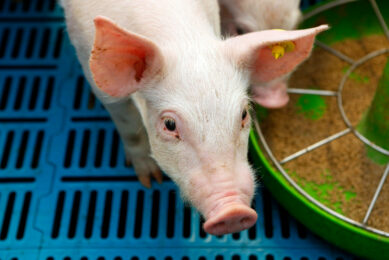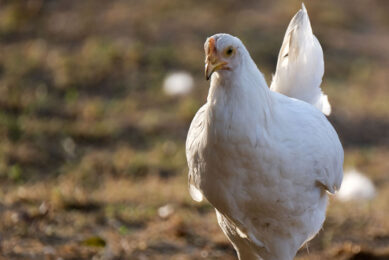Tailor-made prebiotics for cats and dogs

Prebiotics, such as inulin and oligofructose, have been used in pet food for some time now. However, the use of these ingredients in dependent on the application and type of animal, says Poitr Janowicz, pet food manager at Orafti. Emmy Koeleman spoke with him about their new approach in adding tailor-made prebiotics to pet food.
Global producer of the prebiotics inulin and oligofructose, Orafti Animal Nutrition, is also aware of the increase share of premium (tailor-made) brands for specific life stages and conditions of pets. It is, therefore, introducing a new concept in which specific prebiotic
products are designed for different life stages and different purposes. Orafti is the only company that uses the specific molecules from the chicory roots and processes them further to purify them or to semi-refine them. This is different from other key companies that produce inulin and oligofructose from plain chicory roots and use these products simply as they are in their most natural form. “This is not wrong. We do the same, but we use the different molecules found in chicory roots for different purposes,” explains Piotr Janowicz. We produce eight different products (all under the umbrella Beneo™), designed for different species (cat/ dog) and for different life stages/lifestyles of the animal (Figure 1 ). The products differ in their composition; some have shorter chains (oligofructose) and some
have a higher percentage of longer chains (inulin). By combining the inulin and oligofructose in different ratios in one product, the application of the product becomes much more sophisticated. Furthermore, dosages are more precise, which is interesting in an economical point of view. Being more sophisticated means that specific prebiotic products can be used for different applications; some products are more suitable to use in wet pet food, and others are better suited in dry pet food. Customers may also like to use purified forms of prebiotics for their premium brands and the less purified (cheaper) ones for their mid segment and economy brands. In addition, prebiotics may also differ in taste and technological features. Oligofructose prebiotics high in reduced sugar are potentially involved in Maillard reaction. This is a chemical reaction between an amino acid and a sugar, which results in the production of a pleasant aroma. This in turn increases the palatability of the product.
Determining the nutritional requirements of specific life stages has become a major area of research for manufacturers, with Procter & Gamble Iams subsidiary publishing a study that found puppies taking the food additive DHA were easier to train, for example. This fatty acid has been added to
affect them. “Improving stool consistency and reducing odour are one of our primary focuses at the moment,” says Janowicz. These problems are mainly caused by undigested proteins in the large intestine. By increasing the number of good bacteria in the hindgut (by feeding
prebiotics), the good bacteria will eat these undigested proteins, resulting in less smelly stools. However, certain problems or conditions in pets only occur in certain life stages. Body weight control, for example, is a specific problem in older animals. Nutrient absorption and strong
bones are more desirable during the puppy/kitten and mid-age life stages (Figure 2 ).
The digestive tracts of cats and dogs are not the same. The intestines of dogs are more similar to the human gut and adapted to take different sources of key nutrients. The digestive system of cats, however, is more adapted to protein metabolism, just like their wild carnivore family members. Cats therefore have a shorter intestinal tract than dogs. “Especially when feeding prebiotics, it is important to know these differences,” says Janowicz. Our products work in the small intestine and specifically in the large intestine, where short chain prebiotics are dedicated for the proximal colon and long chain prebiotics for distal colon support. By feeding the animals a combination of small and long chains, one can easily accomplish this. The small chains are fermented faster in a selective way than the longer chains. Rapidly fermented short chains can be used in animals with fast transit times (cats vs dogs). For a certain animal they can also be used to target a proximal part of the intestine (e.g. prevent SIBO in dogs). The longer chains migrate to more distal part where they exert their beneficial effect on gut function. The ideal combination of short and long fructan chains allows to
design prebiotics for a particular animal species, with its typical physiological requirements (Figure 3 ).
“We still have to convince some pet food companies about the advances they can gain from using these tailor-made prebiotics.” The pet food industry is a very innovative business, but producers are sometimes hesitant in replacing their existing prebiotics by other newly
developed products, especially in their premium brands. And if they replace an ingredient, it has to be as close as possible to the original one. At the moment, Orafti’s main focus is improving stool consistency and odour, as well as doing more research to support the products. The next focus in pet food will be more on what Orafti has successfully proofed in humans. These are related to specific energy metabolism issues and well-being.
Human food trends become pet food trends Trend 1: Weight management (also in pet food) |











